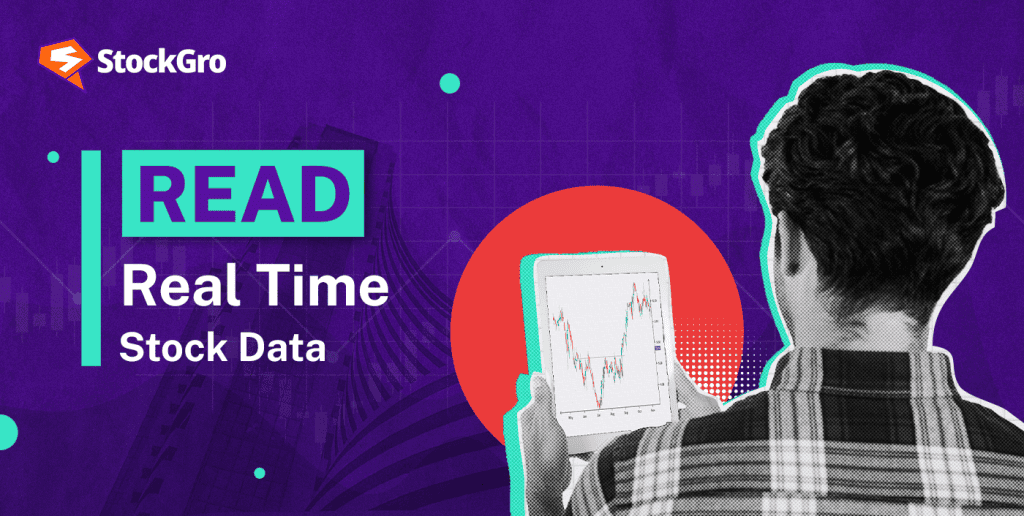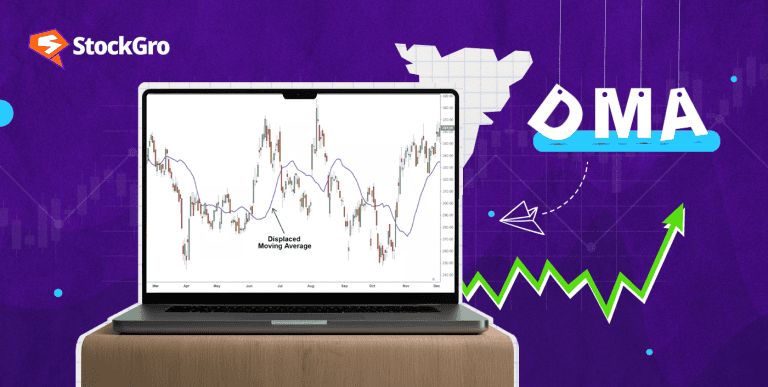
In this evolving era, the growing awareness of savings and investments has navigated investors to various avenues like the bond market, stock exchanges, mutual funds, etc. The growing traffic in these virtual marketplaces underscores the importance of information. It performs the crucial function of creating viability in the transactions.
Therefore, real-time stock data is always stressed by the big brokers, traders and broking firms. However, getting such real-time data is a complex task and attracts significant costs. Exchanges collect this data at their data centres and provide them on a real-time basis to the customers.
Such real-time stock data can provide the required edge to the overall investment process on a regular basis. This data may be delayed by some fraction of a second. Let’s explore how to read stock data and analyse it in detail.
Also read: Bond Market: Definition, Risks, and Types
What is real-time stock data?
The stock market is a puzzle for many due to its constantly fluctuating price levels and demand-supply flow. However, getting real-time stock data can act as a hint for investors to time their market trades. In India, investors can get these data from their concerned exchanges like the National Stock Exchange (NSE) and Bombay Stock Exchange ( BSE). Apart from these, there are authorised vendors for similar functions.
The exchanges collect data on every single trade and price movement from the market at their data centres and later sell to the customers based on their selected levels, instruments and tariff plans. This data includes price quotes, bid-ask spreads, volume details, etc. Understanding the importance of real-time stock data can help investors plan their trades.
An interesting read: Economic indicators and its love for the stock market!
Significance
- It helps create a sense of overall market sentiment and provides timely data for assessing price movement.
- The smallest mispricing can be easy, and it helps significantly in derivatives trading to ascertain the strike prices.
- Due to real-time data, the accuracy has the potential to provide a competitive advantage over other investors.
- It can help process data for algorithmic trading and use modern technological aids such as machine learning and Artificial Intelligence (AI).
- By analysing the price patterns, investors can also get an idea of potential market mishaps or frauds.
The popularity of real-time market data may not be much among retail investors and they may be confused regarding how to analyse the stock data.
How to read stock data?
This data is transferred through a real-time leased line and would require the customer to be on the Point of Presence (POP). This data can be obtained based on different levels and market instruments. These are different for NSE and BSE as follows:
| National Stock Exchange | Bombay Stock Exchange |
| L1: best bid and ask price | Real-time indices |
| L2: market depth data, 5 best bid-ask price | L1 & L2: Equity, derivatives and debt |
| L3: market depth data, 20 best bid-ask price | Currency Derivatives |
| Tick by tick: full order book | Commodity Derivatives |
To avail of these services based on levels or types, specific tariff/cost plans are prescribed by the Securities Exchange Board of India (SEBI). Moreover, these plans are also affected by the investor’s choice of timeframes, such as 15, 5, 2 and 1 minutes. According to these timeframes, the data would be delayed by these minutes more than the original transaction time.
Investors can get such real-time stock data of the required script. Following this, investors mainly need to consider price charts, trade volume at specific prices, support or resistance at particular levels, fundamental details, bid-ask spread and required technical analysis of a particular stock.
Must read: Stock Market Volatility: The Roller-Coaster Ride
How to analyse stock data?
Here are some ways to analyse the real-time stock data collected from the exchanges or data vendors.
- Technical analysis – Getting on-time price details can help investors employ required indicators on the chart, such as moving averages, Relative Strength Index (RSI), etc.
- Ratios – Certain stock-specific ratios like price to earnings or price to sales can be better interpreted with the availability of information.
- Statistical analysis – Investors can use the large data to simply decode the trend with the help of tools like kurtosis, variance analysis, standard deviation and more.
- Visualisation tools – Today, the technology has the potential to project future outlooks with accurate data. Real-time data can be a suitable resource for the same. Some tools like Power BI can also help navigate the journey in detail.
- AI and machine learning – Processing big data is a crucial characteristic of these technologies. Real-time stock data can be speedily processed and with the required accuracy. Moreover, it has the potential to eliminate human errors.
- Fundamental analysis – Understanding the trend consistently can be used with annual or quarterly financial results to analyse a particular company.
Read more on the topic: What Are Stock Market Simulators? Features and Benefits
Summary
Stock market investors can gain a significant edge in their transactions with real-time stock data. However, one should source it from reliable sources like exchanges and analyse it with varied tools to make informed investment decisions. It requires a certain cost as tariffs, which should be analysed before availing this facility.
FAQs
- What is the real-time data of NSE?
It is one of the largest stock exchanges based on the volume of transactions. It provides data regarding market quotes in the real-time to its customers. This data may span from debt, capital, corporate bond, and derivatives markets, as per the investor’s need. Apart from the NSE, investors can also get it from an authorised vendor for such data.
- How can AI help analyse real-time market data?
The technology has the potential to tap the pattern and analyse the large data from every minor transaction in the market. The AI can ascertain the price levels of retraction or support levels. Moreover, it can help track the fraudulent practice and beware investors regarding the same.
- Why is real-time stock data so important?
Markets are flooded with investors, and tapping correct market information in the chaos may be difficult. Real-time stock data helps create ease in processing and analysing the overall market conditions. Moreover, it significantly helps in the derivative trades while determining the contract rates.
- How to analyse the market data?
In modern times, investors can analyse such data through various techniques such as AI and machine learning models. Also, statistical tools like standard deviation and kurtosis can help ascertain required price levels. Moreover, one can source data on the required timeframe to manage the price actions.
- How can real-time stock data help in derivatives trading?
The stock derivatives like futures and options are majorly affected by order and price movement. When a trader has such a facility of real-time data, one can gain an edge over others in terms of speed and strike prices. Moreover, analysing the most minor price movement in such trade can be easy with such data.

